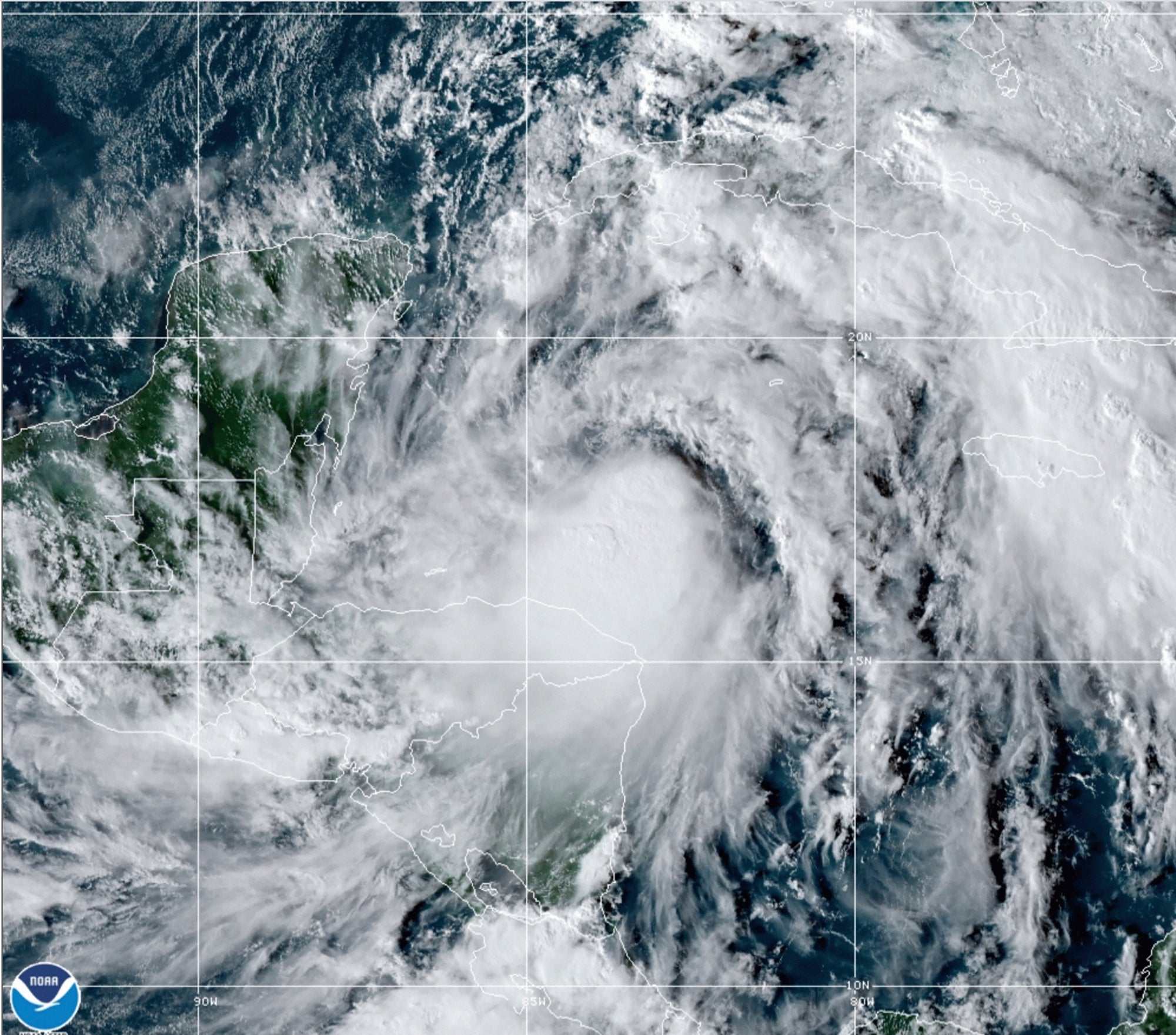‘I’ve never seen anything like it’: Hurricane Zeta barrels towards US
Louisiana is bracing for what is expected to be its third hurricane strike this year

Your support helps us to tell the story
From reproductive rights to climate change to Big Tech, The Independent is on the ground when the story is developing. Whether it's investigating the financials of Elon Musk's pro-Trump PAC or producing our latest documentary, 'The A Word', which shines a light on the American women fighting for reproductive rights, we know how important it is to parse out the facts from the messaging.
At such a critical moment in US history, we need reporters on the ground. Your donation allows us to keep sending journalists to speak to both sides of the story.
The Independent is trusted by Americans across the entire political spectrum. And unlike many other quality news outlets, we choose not to lock Americans out of our reporting and analysis with paywalls. We believe quality journalism should be available to everyone, paid for by those who can afford it.
Your support makes all the difference.Louisiana braced Wednesday for what is expected to be its third hurricane strike this year as Zeta, the 27th named storm of a historically busy Atlantic hurricane season, headed toward an expected landfall south of New Orleans.
Zeta raked across the Yucatan Peninsula Tuesday, striking as a hurricane, before weakening to a tropical storm. It's forecast to regain hurricane strength before hitting the Gulf Coast sometime Wednesday evening.
Hurricane warnings stretched from Morgan City, Louisiana, along the Mississippi coast to the Alabama state line. Late Tuesday, the storm had sustained winds of 65 mph (105 kph) and was centered 410 miles (655 kilometers) south-southwest of the Mississippi River’s mouth.
Louisiana Gov. John Bel Edwards asked President Donald Trump for a disaster declaration ahead of the storm. He and Alabama Gov. Kay Ivey both declared emergencies, as did Mayor Andrew “FoFo” Gilich in Biloxi, Mississippi. Trump declared an emergency for Louisiana Tuesday evening.
“There’s no doubt that we’ve seen a lot this year, with COVID and so many threats from so many storms,” Gilich said in a news release, “but this storm shows that we haven’t seen it all yet."
The storm approached as New Orleans officials announced that a turbine that generates power to the city's aging drainage pump system broke down Sunday, with no quick repair in sight. There was enough power to keep the pumps operating if needed but it left authorities with little excess power to tap should a breakdown of other turbines occur, officials said at a news conference with Mayor LaToya Cantrell.
Officials said they were running through contingencies to provide power and make repairs where needed should there be other equipment problems. Forecasts, meanwhile, called for anywhere from 2 to 6 inches (5 to 15 centimeters) of rain to fall in the New Orleans area. Officials noted that Zeta is expected to be a relatively fast-moving storm, possibly mitigating the flood threat.
Zeta broke the record for the previous earliest 27th Atlantic named storm that formed Nov. 29, 2005. It’s also the 11th hurricane of the season. An average season sees six hurricanes and 12 named storms.
The extraordinarily busy hurricane season has focused attention on the role of climate change, which scientists say is causing wetter, stronger and more destructive storms.
Louisiana has been hit by two tropical storms and two hurricanes: Laura, blamed for at least 27 Louisiana deaths after it struck in August, and Delta, which exacerbated Laura’s damage in the same area just weeks later. New Orleans has been in the warning area for potential tropical cyclones seven times this year but has seen them veer to the east or west.
“I don’t think we’re going to be as lucky with this one,” city emergency director Colin Arnold said.
Another approaching storm piled on more worries for evacuees from previous hurricanes. The state is sheltering about 3,600 evacuees from Laura and Delta, most in New Orleans area hotels.
“I’m physically and mentally tired,” a distraught Yolanda Lockett of Lake Charles said, standing outside a New Orleans hotel.
Meanwhile, many along the coast renewed an unwanted ritual of preparation.
On Dauphin Island, off the Alabama coast, workers at Dauphin Island Marina prepared for Zeta, although there was little left to protect after Hurricane Sally hit in September.
“We don’t have any docks or fuel pumps at this point. Sally took it all out," employee Jess Dwaileebe said.
In Louisiana's coastal St. Bernard Parish, east of New Orleans, Robert Campo readied his marina, again, for an approaching storm. "We’re down for four or five days, that’s four or five days nobody’s fishing. That’s four or five days nobody is shrimping. That’s four or five days, no economic wheels are turning,” he said.
“I've never seen anything like it,” Thomas Hymel, an extension agent in Jeanerette with the LSU Agricultural Center, said of this year's series of storms and other troubles. He said the storms have meant more than a month of down time for seafood harvesters, many of whom are suffering a drop in demand from restaurants due to the coronavirus pandemic.
___
Santana reported from Shell Beach, Louisiana. Associated Press reporters Jay Reeves, in Birmingham, Alabama; Melinda Deslatte in Baton Rouge, Louisiana; Stacey Plaisance in New Orleans; Seth Borenstein in Kensington, Maryland, and Gabriel Alcocer in Cancun, Mexico, contributed to this report.